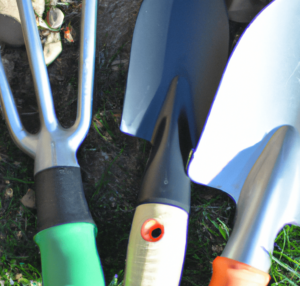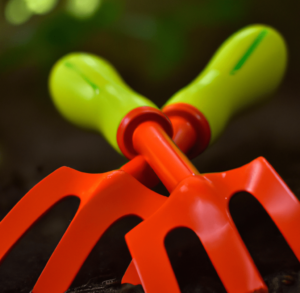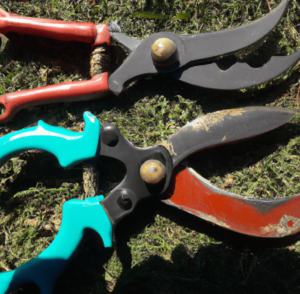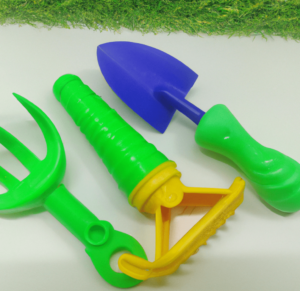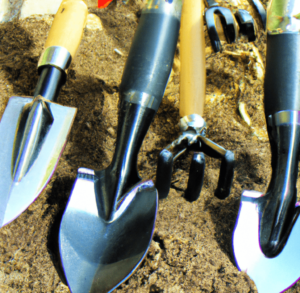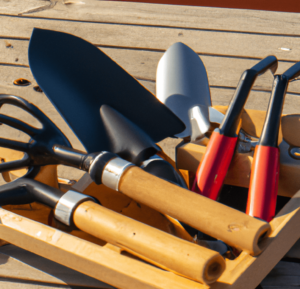For many individuals, gardening is a well-liked and enjoyable hobby, but it can also be physically taxing. Using standard gardening equipment on a regular basis can be taxing on your hands, wrists, and back. Gardening injuries and fatigue can be significantly reduced by using ergonomic tools, which are created with comfort and safety in mind. Gardening equipment that is ergonomically built will ease the pressure on your hands, wrists, and back. These instruments are frequently manufactured with ergonomic handles that fit naturally in the hand, lowering the risk of injury and enabling safer and more comfortable use. Let’s talk more about the benefits of using ergonomic garden tools.
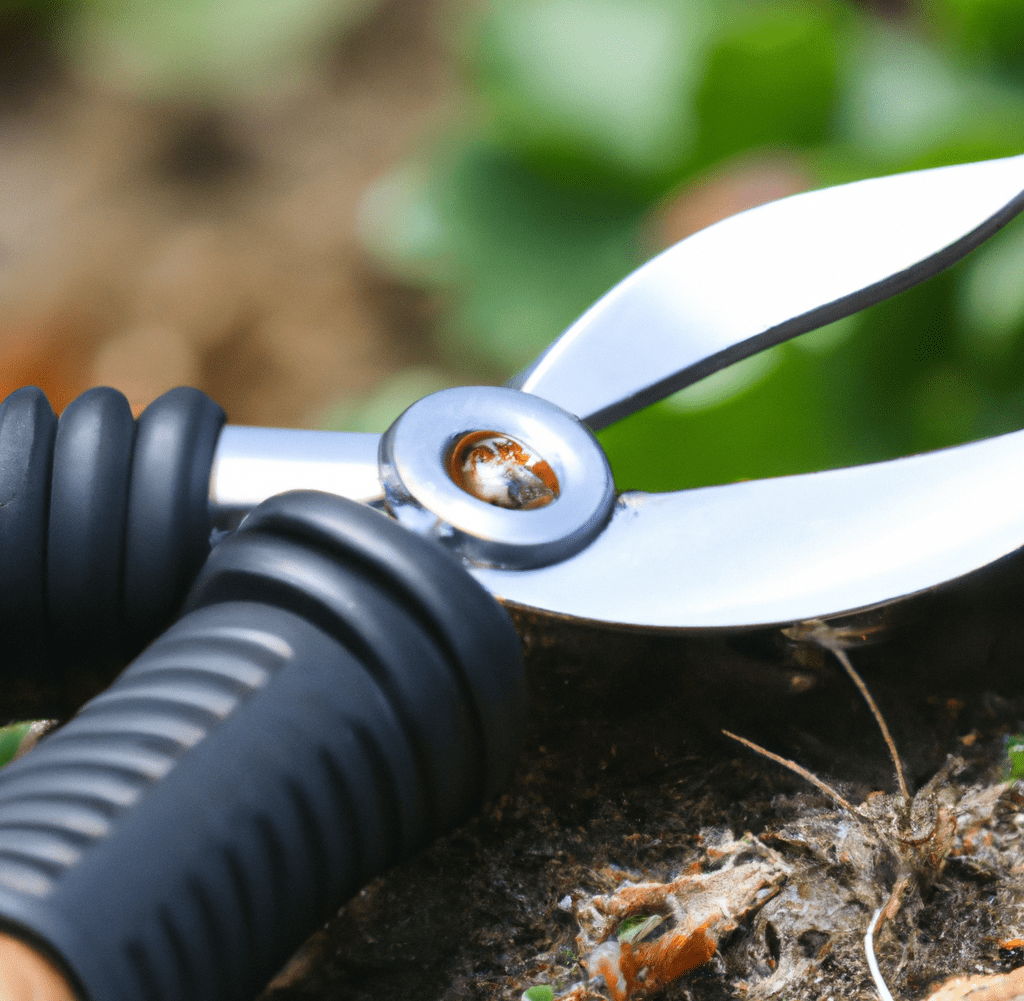
The Physical Benefits of Ergonomic Garden Tools
Garden tools for specific tasks and ergonomically built and made with the user’s safety and comfort in mind, and they can offer a number of physical advantages. The benefits of using ergonomic garden tools include that they’re made to ease the stress on the hands, wrists, and back, enabling a more relaxed and effective grip.
Additionally, the ergonomic design encourages proper posture and lowers the chance of damage. Gardeners can benefit from a more pleasant and secure gardening experience by using ergonomic gardening tools, making it simpler to enjoy their activity for longer periods of time.
Reduced Strain on the Hands, Wrists, and Arms
As a physical activity, gardening may be very taxing on the hands, wrists, and arms, especially when using tools and dealing with soil. It might be challenging for gardeners to maintain their passion as a result of repetitive strain injuries and other issues brought on by the use of standard gardening tools. However, the benefits of using ergonomic garden tools include lessening the strain on the hands, wrists, and arms.
These tools’ ergonomic design enables a relaxed and natural grasp, lowering the danger of injury and cutting back on the strain. This benefit can be particularly significant for gardeners who spend a lot of time working in the soil and using tools because it can greatly improve how fun and sustainable gardening is for them.
Examples of Specific Ergonomic Tools That Reduce Hand, Wrist, and Arm Strain
Even the best gardening tools for small spaces and urban gardens can be ergonomic. Here are some of the most popular ones so you can reap the benefits of using ergonomic garden tools right away:
- Ergonomic trowels: Designed with a comfortable grip and a curved handle that encourages a neutral wrist position, ergonomic trowels lessen the risk of damage.
- Ergonomic Pruning Shears: With their pleasant grip and lightweight construction, these shears make it simpler to keep a straight stance while pruning.
- Ergonomic cultivators: These implements have a neutral wrist position and a pleasant grip that lower the risk of injury when working in the soil.
- Ergonomic rakes: By having a pleasant grip and a lightweight design, these rakes make it simpler to keep a straight posture while raking soil or leaves.
These are just a few of the many ergonomic gardening tools that are readily accessible, and by utilizing them, gardeners can lower their risk of injury and enhance their gardening experience. Gardening using ergonomic equipment can be a more pleasurable and sustainable activity, and they are crucial to preserving a comfortable and healthy gardening lifestyle.
Improved Posture and Reduced Back Pain
The benefits of using ergonomic garden tools include enhancing posture and offering a number of health advantages. These tools provide a secure grasp while lowering the risk of harm because they are made to fit the natural curve of the hand. To encourage proper posture and lower the risk of back pain, the design of ergonomic equipment also takes into account the movements required in gardening operations, such as digging, planting, and pruning.
These instruments’ ergonomic handles are made to match the form of the hand naturally, enabling a more stable and cozy grasp. As a result of being able to maintain a more natural stance while working in the garden, can benefit the gardener’s general posture. Gardening may become a more fun and environmentally friendly activity with the help of ergonomic garden tools that are designed to lessen the stress on the neck and back.
By enabling the gardener to spend a long time outside without experiencing pain or discomfort, ergonomic equipment can also have positive effects on the gardener’s mental and emotional well-being in addition to their physical advantages. Gardeners can take advantage of the many health advantages of gardening while lowering their risk of injury and pain by using ergonomic gardening tools.
Specific Ergonomic Tools That Improve Posture and Reduce Back Pain
The benefits of using ergonomic garden tools can be taken advantage of with the following
- Ergonomic kneeling pads: these are made to cushion and support the knees while kneeling, easing the pressure on the back and knees.
- Ergonomic garden stools: this allows the user to sit comfortably while working in the garden while also encouraging excellent posture and reducing back strain.
- Ergonomic shovels: by having a pleasant grip and lightweight construction, these shovels lessen the strain on the arms and back when digging.
- Ergonomic garden hoes: Garden hoes that are ergonomically built have a comfortable grip and are lightweight, which eases the strain on the arms and back while hoeing.
Gardeners can enhance their posture and lessen their risk of back strain by utilizing these ergonomic gardening tools, making it a more fun and long-lasting hobby. This equipment can assist a gardener to continue their activities for a longer period of time and are essential to maintaining a comfortable and healthy gardening lifestyle.
Increased Comfort and Ease of Use
The benefits of using ergonomic garden tools include that they are made to promote user comfort in a variety of ways. First off, the tool handle’s size and shape are intended to complement the natural contours of the hand, encouraging a secure grasp. This makes it simpler for the gardener to labor for longer periods of time and lowers the chance of hand tiredness or damage.
Additionally, the movements required to perform gardening jobs are taken into account in the design of ergonomic garden tools. The danger of wrist strain may be decreased, for instance, if the handle is slanted to encourage a neutral wrist position. The tool may also be made with a lightweight structure, which would make it lighter and simpler to operate.
Finally, ergonomic garden tools are made from carefully chosen materials that offer a comfortable grip and lessen the possibility of blisters or other types of hand irritation. For increased comfort and grip, the handle could, for instance, be coated in a soft-touch material. By taking into account these elements, ergonomic gardening tools are created to promote user convenience and comfort, making gardening a more pleasurable and long-lasting hobby.
Specific Ergonomic Tools That Increase Comfort and Ease of Use
As you learn about the benefits of using ergonomic garden tools, here are some that increase comfort and are easy to use:
- Ergonomic hand cultivators: hand cultivators that are ergonomically built have curved handles that fit naturally in the hand and lessen the possibility of hand fatigue or damage.
- Ergonomic pruning shears: gardeners can prune plants more easily and without experiencing hand or wrist strain by using ergonomic pruning shears, which have a lightweight design and a pleasant grip.
- Digging forks with an ergonomic handle: these tools encourage a neutral wrist position, lowering the possibility of wrist strain while working in the dirt.
- Ergonomic Gardening gloves: gardening gloves with ergonomic features, including padded palms and wrist support, can also improve comfort and lower the risk of hand injuries.
The pleasures of gardening can be enjoyed by the gardener without any pain or discomfort while employing this particular ergonomic equipment. This can make gardening more fun and sustainable for the gardener over the course of a longer length of time.
3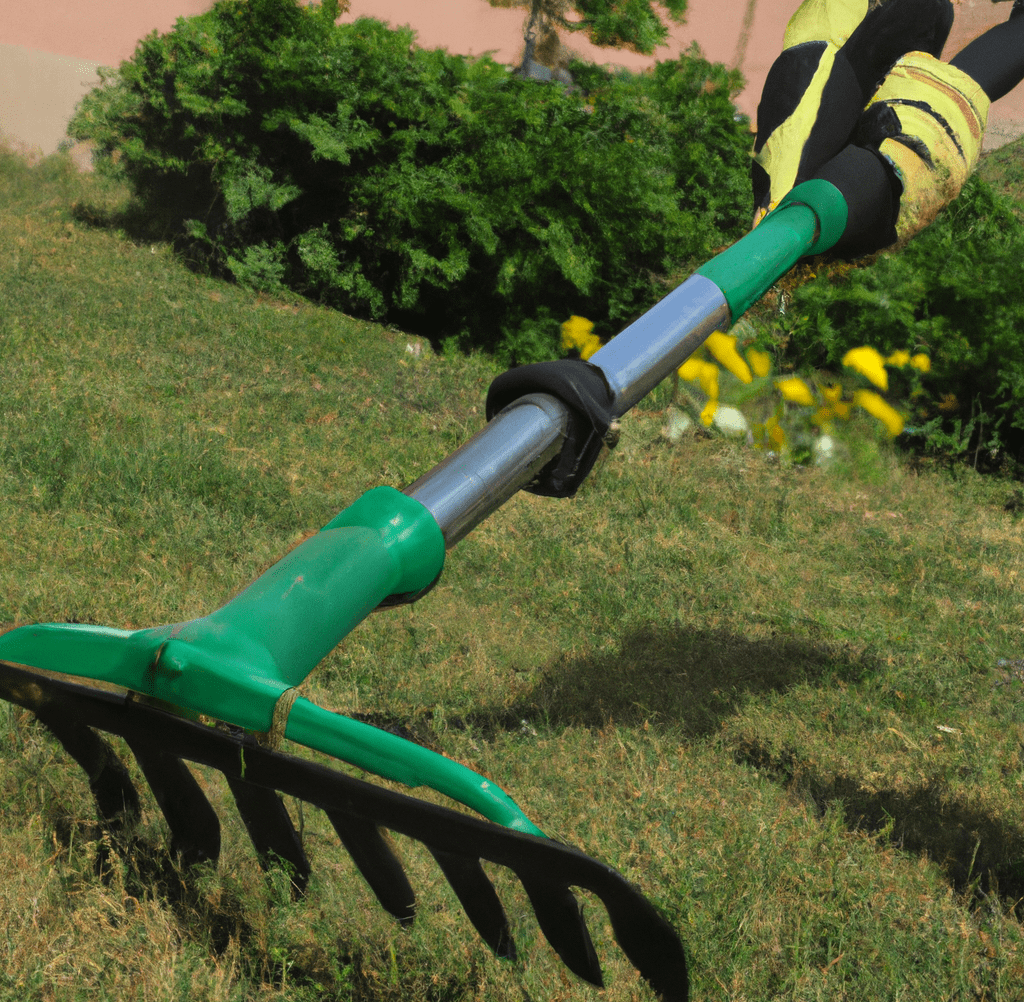
The Psychological Benefits of Ergonomic Garden Tools
The benefits of using ergonomic garden tools include helping a gardener’s mental health in addition to their physical health. The likelihood that a gardener will enjoy their work and feel a sense of success increases when they are at ease and free from bodily pain or discomfort. This can then result in better mental health and general well-being.
Additionally, using ergonomic gardening equipment might help to lower stress levels. When a gardener is not in pain or discomfort when working in the garden, they are better able to concentrate on the current task, which can assist to lower tension and encourage relaxation.
Gardening equipment that is ergonomic can aid a gardener’s general health and well-being by offering both physical and psychological benefits. This could make gardening a more fun and long-lasting pastime, encouraging a healthier and happier life.
Reduced Stress and Fatigue
The benefits of using ergonomic garden tools are plenty, including reducing stress and tiredness. A gardener is less likely to experience stress or exhaustion when they are comfortable and not in bodily pain or discomfort, which makes gardening a more fun and long-lasting activity.
Additionally, by allowing the gardener to concentrate entirely on the task at hand and encouraging relaxation, the use of ergonomic garden tools can also aid in the reduction of mental stress. This, together with the physical advantages, can aid in enhancing the gardener’s general health and well-being and fostering a healthier and happier existence.
How Ergonomic Tools Can Reduce Stress and Fatigue
The benefits of using ergonomic garden tools include reducing stress and fatigue because:
- Ergonomic gardening equipment is made to encourage the right body alignment when working in the garden. This can assist to lessen the stress and strain put on the back, neck, and other joints, reducing overall weariness and the risk of injury.
- Ergonomic handles that are contoured to accommodate the gardener’s hands are a feature of ergonomic garden tool design. This lessens the strain on the hand, wrist, and arm while the gardener is working by allowing them to retain a natural grasp.
- A lot of ergonomic garden tools have features that can be adjusted, enabling the gardener to tailor the tool to their particular requirements. By doing this, you may be able to lessen the strain and exhaustion that come from using items that are excessively heavy or unwieldy for your body.
Ergonomic gardening tools can support a healthier and happier life for the gardener by ensuring a relaxing and stress-free gardening experience. They can lessen mental and physical exhaustion, making gardening a more delightful and long-lasting hobby.
Specific Ergonomic Tools That Reduce Stress and Fatigue
You can reap the benefits of using ergonomic garden tools with the following:
- Ergonomic handles: many garden tools, including rakes, hoes, and trowels, now have handles that are ergonomically formed to lessen strain and arm, wrist, and hand fatigue.
- Adjustable handles: some tools, like pruning shears and loppers, now have handles that can be adjusted to the gardener’s preferred length, easing the strain and exhaustion that can come from using equipment that is either too long or too short.
- Equipment that is lightweight: many ergonomic gardening tools are made to be light, which makes them simpler to hold and lessens the strain and exhaustion that can come from using heavier tools for a long time.
- Ergonomic kneelers: when working in the dirt, many gardeners experience knee pain. Gardening can be made more comfortable and enjoyable by using ergonomic kneelers like knee pads and garden stools, which can assist to lessen the strain and exhaustion placed on the knees.
Gardeners can engage in a more comfortable and sustainable hobby by using ergonomic gardening equipment that is made to alleviate stress and exhaustion. With the use of these instruments, gardening can be a truly joyful and gratifying activity while also promoting a healthier and happier life for the gardener.
Increased Motivation to Garden
Gardening-related physical and mental stress can be reduced with the use of ergonomic tools. Ergonomic equipment can increase grip, and comfort, and reduce stress on the hands, wrists, arms, and back, making gardening more fun. A gardener may be more inspired to work harder and spend more time in the garden as a result.
Also, the benefits of using ergonomic garden tools include ergonomic equipment’s enhanced comfort and use can also aid to lessen tension and exhaustion, which can boost a gardener’s drive and excitement for the hobby. The use of ergonomic tools can also improve one’s health by lowering the chance of injury, encouraging proper posture, and creating a healthier work atmosphere. Overall, using ergonomic equipment can enhance a gardener’s love of their hobby and enhance their physical and mental health.
Specific Ergonomic Tools That Increase Motivation to Garden
As you learn about the benefits of using ergonomic garden tools, here are the tools that can increase motivation:
- Soft Grip: tools with soft grip handles are made to provide a pleasant grasp, minimizing hand stress and strain and enabling the gardener to work for longer periods of time.
- Adjustable handles: the gardener may fit the handle length to their body and working position with these tools, which lessens stress on their wrists, arms, and back.
- Lightweight construction: lightweight tools require less physical effort to hold and move than big, hefty garden tools.
- Tilted or curved handles: these tools can lessen the need for awkward or repeated motions, which relieves stress on the hands, wrists, and arms.
- Shock-absorbing: tools with shock-absorbing qualities can lessen the impact and shock associated with cutting, digging, and other difficult gardening chores, which relieves stress and exhaustion on the hands and body.
Gardeners can boost their motivation and passion for the activity while decreasing the physical and mental strain involved with gardening by selecting the appropriate ergonomic tools for the work at hand.
How to Choose Ergonomic Garden Tools
When you’ve learned all about the benefits of using ergonomic garden tools, think about the following when choosing the best ones for your roster:
Size and Weight
The size and weight of the instruments should be taken into account while selecting ergonomic garden tools. While using tools that are too little or too light might be challenging, using tools that are too heavy or too large can result in strain and damage.
It’s crucial to select gardening tools that are the proper size and weight for your body type and demands in order to maximize comfort and convenience of use. Designed with the gardener’s comfort in mind, ergonomic garden tools often have a lightweight construction and ergonomic handles that lessen the burden that must be carried. This can lessen stress on the hands, wrists, and arms while also promoting better posture and easing back pain.
Handle Design
When selecting ergonomic garden equipment, the handle design is an important thing to take into account. The handle ought to offer a secure grip that helps the gardener to keep their wrists in a neutral position and reduce their risk of damage.
Additionally, the handle should be constructed from a sturdy material that offers a secure grip even when soiled or damp. The handle should ideally be shaped to fit the curve of the hand and offer a secure grip that lessens strain and improves tool control. In order to assist prevent strain and damage, the handle should be made to need less force to execute gardening activities.
The advantages of utilizing ergonomic garden tools can be further increased by selecting a handle design that offers appropriate support, comfort, and control. This will make gardening more fun.
Blade or Tool Design
The design of the blade or tool itself must be taken into account when choosing ergonomic garden tools. A well-made blade or tool has to be capable of carrying out its intended function quickly and successfully while also easing the strain on the gardener’s hands, wrists, and arms. A sturdy and simple-to-maintain blade or tool should also be ergonomic.
Look for equipment with blades that are constructed from durable materials and shaped to offer the best cutting power while also lowering the chance of damage. The ability to maintain a proper and comfortable position while using the tool can also be helped by blades or tools with a nice grip.
Recommendations for Specific Ergonomic Garden Tools
To choose the tools that are best for you and your gardening activities, it’s vital to take into account your body type and physical capabilities, the specific duties you will be performing in the garden, the weight and design of the equipment, and your wants and preferences as a gardener.
Ergonomic Hand Pruners
Many people find gardening to be enjoyable, but it can also be very taxing on your hands, wrists, and arms. A hand pruner’s ergonomic design can significantly improve comfort and reduce strain. Hand pruners are a typical instrument used in gardening. The comfort of the gardener is a priority in the design of ergonomic hand pruners. It’s simpler to operate for longer lengths of time thanks to its ergonomic grip, which lessens strain on your hands and wrist.
In order to lessen hand fatigue, the handles of ergonomic hand pruners are frequently composed of a soft material that molds to the curve of your hand. The blade design of ergonomic hand pruners is significant as well. In order to better mimic the natural action of your hand, the blades are frequently curved, which makes it simpler to cut through stems and branches.
Additionally, the blades are frequently composed of premium materials that maintain their sharpness longer, requiring less regular sharpening.
Ergonomic Trowels
An essential piece of equipment for gardening tasks that include digging or planting in the soil is an ergonomic trowel. They’re made to lessen the possibility of harm and strain on the wrist, hand, and arm positions of gardeners while they execute these jobs.
These trowels have a special handle design that enables the gardener to keep a relaxed and natural hold, lowering hand and wrist strain. The handle’s design also encourages a more neutral wrist position, which lowers the chance of developing a repetitive strain injury.
Larger handles on ergonomic trowels than regular trowels enable a more secure grasp and lessen hand fatigue. This enables gardeners to work for prolonged periods of time without experiencing pain or discomfort. The handle’s design also offers a more firm grasp, lowering the chance that the tool may be dropped and hurt the gardener or harm plants.
Ergonomic Rakes
Gardeners can gain a lot from ergonomic rakes because they make gardening operations more comfortable and supportive. When raking soil and other materials, these instruments are intended to lessen hand and wrist stress and aid in maintaining the right-hand position. This makes gardening a more fun and gratifying hobby by reducing bodily stress and injury.
Along with providing comfort, ergonomic rakes frequently include a lightweight design, which helps to lighten the load on the tool and facilitates prolonged usage by gardeners. Rakes’ handles play a significant role in their ergonomic design since they influence the grip and how the tool feels in the hand. Numerous ergonomic rakes have curved or slanted handles, which enhance grip and offer a pleasant hold.
Bottom Line: The Benefits of Using Ergonomic Garden Tools
Although gardening is a lovely and gratifying activity, it can be physically taxing as well. Making gardening more pleasant and enjoyable can be accomplished by using ergonomic gardening tools. The benefits of using ergonomic garden tools are vast, from lowering back discomfort and tension to boosting comfort and motivation. Gardeners can select the most ergonomic tools for their needs by taking into account elements like size, weight, handle design, and blade shape. These gadgets not only make gardening more physically enjoyable, but they also have psychological advantages by easing stress and weariness. Gardeners may find the ideal tools to make their gardening experience more pleasant and joyful thanks to the large selection of ergonomic tools that are readily available. So go ahead and treat yourself to some new ergonomic gardening tools to see the advantages for yourself!
The Benefits of Using Ergonomic Garden Tools FAQs
How can I use ergonomic gardening tools, and why should I?
Gardening injuries and weariness can be greatly reduced by using ergonomic garden tools, which are built with the user’s safety and comfort in mind. Ergonomic gardening tools reduce the strain on your hands, wrists, and back that comes from using normal gardening equipment on a regular basis. Gardeners can use them to reduce their chance of injury and improve their gardening experience. Ergonomic tools are essential to maintaining a comfortable and healthy gardening lifestyle and can make gardening more enjoyable and environmentally friendly.
What physical advantages do ergonomic garden tools offer?
A more relaxed and effective grasp is made possible by ergonomic garden tools’ design, which reduces stress on the hands, wrists, and back. The ergonomic layout also promotes good posture and lessens the risk of injury. By employing ergonomic gardening tools, gardeners can enjoy their work more comfortably and safely, which makes it easier to engage in the activity for longer periods of time.
What kind of ergonomic tools specifically reduce hand, wrist, and arm strain come to mind?
Ergonomic trowels, pruning shears, cultivators, and rakes are a few examples of specific ergonomic instruments that lessen hand, wrist, and arm strain. These tools reduce the danger of damage when working in the soil thanks to their neutral wrist position and comfortable grip. These rakes make it easier to maintain a straight posture while raking soil or leaves since they have a comfortable grip and a lightweight construction.
How are posture and back pain improved by ergonomic gardening tools?
Because they are made to accommodate the natural curvature of the hand, ergonomic tools are designed to provide a comfortable grasp while reducing the risk of injury during gardening chores like digging, planting, and pruning. Gardeners can benefit from the many health benefits of gardening while reducing their risk of pain and injury by using ergonomic gardening tools to maintain a more natural stance while working in the garden.
What specific ergonomic devices help with posture and lessen back pain?
Garden stools, ergonomic kneeling pads, shovels, and hoes are a few specialized ergonomic items that help with posture and lower back problems. These objects are designed to support and cushion the knees when knelt, relieving strain on the back and knees. When working in the yard, the user can sit comfortably on ergonomic garden stools, which help promote good posture and lessen back pain.
Which specific ergonomic gardening tools come to mind for lowering stress and fatigue?
Garden tools with ergonomic handles, adjustable handles, lightweight construction, and ergonomic kneelers are a few examples of specific ergonomic garden tools that lessen stress and fatigue.
How may gardening motivation be increased by the use of ergonomic gardening tools?
By lowering the physical and emotional strain associated with gardening, using ergonomic gardening tools can enhance motivation to garden. Gardening is more enjoyable when using ergonomic tools, which improve grip and comfort while easing pressure on the hands, wrists, arms, and back. Gardeners may be motivated to put in more effort and time on the garden as a result of this.
What specific ergonomic gardening gadgets might boost gardening motivation?
Tools with soft grip handles, adjustable handles, lightweight construction, slanted or curved handles, and shock-absorbing features are just a few examples of specific ergonomic gardening tools that can boost gardening motivation.
How can gardeners pick the most comfortable gardening equipment?
By taking into account the size, weight, handle style, and tool or blade design, gardeners can select the most ergonomic gardening tools. It’s crucial to choose equipment that is the right size and weight for the user’s needs and body type. The instrument or blade should be made of sturdy materials, have a solid grip that aids in keeping the wrists in a neutral posture and be contoured to provide the best cutting power while minimizing the risk of damage.


